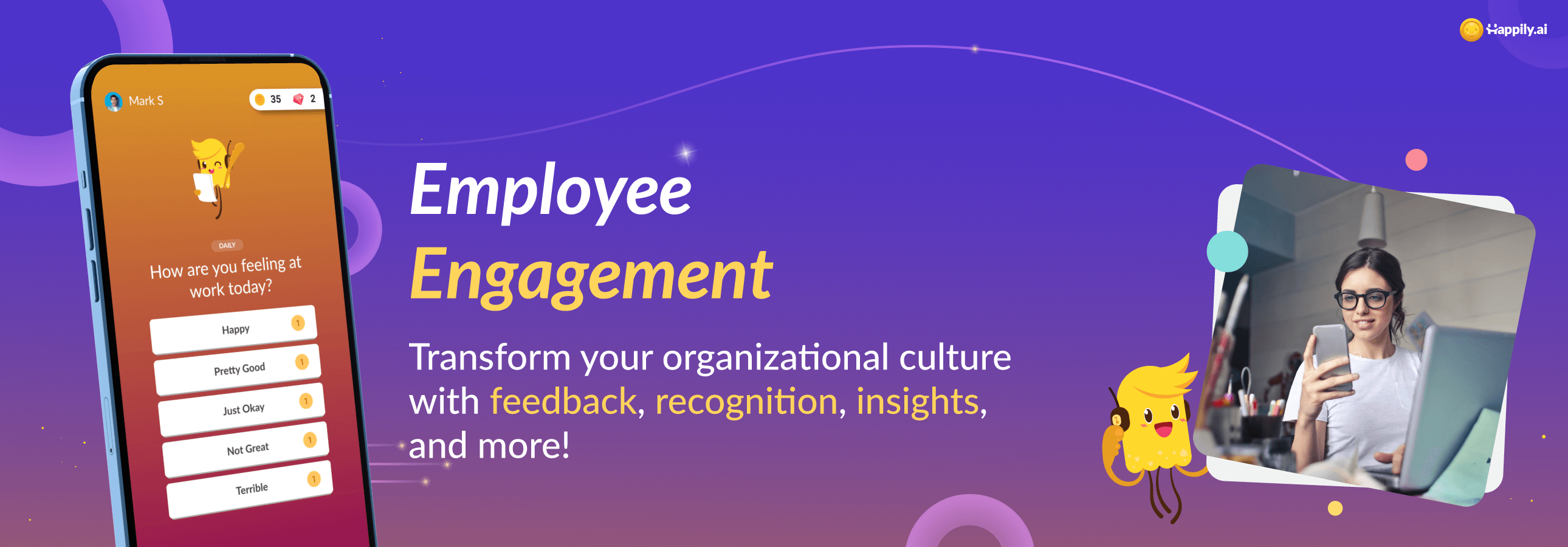Daily check-ins let us evolve from using data as a reactive diagnostic tool to a proactive real-time problem-solving tool
Employee Engagement has traditionally been a once-a-year initiative to gather feedback, usually via survey, from employees to help organizations identify areas of improvement. However, the time delay between data collection and action (usually 4–6 months) limits its potential. If surveys are to really improve engagement, feedback to action needs to be as close to real-time as possible because the needs of employees are ever-changing.
Daily check-ins, light-weight but frequent communication between employees and their managers, have become a popular way to gather timely feedback from employees. Regular data collection provides trend data, which is more informative and accurate than point-in-time data. Furthermore, timely questions unlock a new set of questions that can be asked, and a new set of data that can be gathered.
Daily check-ins, for example, provide an opportunity to ask how employees are feeling every day. They can also be asked, “Have you felt stressed or overwhelmed at work during the past 7 days?” So, instead of evaluating the overall Wellness of the organization once a year, we can now better understand how stress propagates and intervene on an individual level before an employee burns out.
How are you feeling today?
As people leaders, it is critical for us to know how our people are feeling, what their key challenges are, and how we help them. In that past, we’ve relied on our intuition to assess these attributes for each of the people we work with. Today, Pulse Surveys take the guesswork out of management and people decision-making.
Our Study
Using Happily’s Daily Pulse Survey, we collected feedback from employees about how they’re feeling each day in addition to over 200 other attributes that range across different dimensions of work-life ― from Wellness and Recognition to Company Alignment and Personal Growth.
Here, we showcase results from only 3 questions:
- How are you feeling today? (asked daily)
- Have you gotten recognition in the past 7 days? (asked weekly)
- Have you felt stressed or overwhelmed at work over the past 7 days? (asked weekly)
We provide a preview of the responses made by different employees to show how just 3 questions collected on a daily and weekly basis can tell us a lot about how we, as managers and business & HR leaders, can help our people and make better decisions.
In the data visualizations below, each bar represents a week, where green and red bars represent the frequency of reported happiness and unhappiness in each week. “W” and “R” markers represent weeks in which Wellness and Recognition were reported as low.
Employee A
Employee A’s pulse survey results indicate that the employee is happy for the most part. However, during weeks where low wellness (being stressed and overwhelmed) are strung together without gaps, happiness is greatly affected.
Employee B
Employee B’s responses show that he/she did not receive recognition across all measured weeks (except for 1 week). This lack of recognition does not appear to impact their happiness. However, as soon as low Wellness became a consistent trend, happiness decreased rapidly. It would take many weeks without a Wellness issue before the employee would return to a happy state.
Employee C
Employee C reported low Wellness across most weeks but Wellness did not seem to impact the employee’s happiness. On the other hand, low Recognition appears to have a greater impact on Happiness than Wellness in this case. A week without recognition sees an immediate drop in Happiness (and in some cases a drastic increase in unhappiness).
Employee D
Employee D’s responses indicate that neither Wellness or Recognition impacts their Happiness. However, the drastic decline in the latter weeks shows a change that, although not explained by Wellness or Recognition, maybe due to another engagement dimension.
Real-time insight
Pulse Surveys bring real-time insights into how employees are feeling and doing on different key dimensions of work-life. As people leaders can now interject at the right time (shown in the infographic below) to help our employees in a meaningful way and be a step ahead of people challenges. Instead of diagnosing problems after the fact, we can proactively make better decisions and help those that need it most in a timely manner.
An article in the Wall Street Journal depicted pulse surveys as being used to “provide data on how teams actually feel and catch problems before they fester.” [2] Our results confirm that pulse survey results are more honest and reliable than annual surveys have ever been. Dynamic data management is also much more useful if you are coaching managers so they can better see and measure how their actions affect change. And if we’re able to respond to feedback, act fast, and proactively solve problems, we can make meaningful strides to reduce voluntary turnover and increase employee engagement.
How is this a Game-changing tool?
Daily check-ins have changed the game for managers and business & HR leaders. The real key to success, though, is how the data is used. Employees who are being tagged repeatedly for data need to view the process as positive. The pulse data needs to lead to dialogue, which affects action and measurable business results. [3]
Setting up Daily Check-ins in your organization can be transformational because you’re putting in place a powerful intervention to engage employees, drive continuous improvement, teach employees, and help managers and leaders do their jobs better (and more easily).
Happily.ai is an all-in-one employee experience platform that fosters a resilient workplace. Organizations use Happily to run daily check-ins, enable better conversations, and develop people managers. And real-time insights help you better understand your teams and people. Visit us on our website or sign up for a demo here to learn more!

References
[2] Silverman, R. E. (2014, December 2). Are you happy at work? Bosses push weekly polls. Wall Street Journal, http://www.wsj.com/articles/more-bosses-use-shortfrequent-polls-to-measure-morale-1417550446
[3] Employment Relations Today 43(1):33–39 · April 2016, “The Potential of Pulse Surveys: Transforming Surveys into Leadership Tools” (https://www.researchgate.net/publication/301308146_The_Potential_of_Pulse_Surveys_Transforming_Surveys_into_Leadership_Tools)
[4] Photo by Hassan Pasha on Unsplash









